In this tutorial and recipe, I share my tips and techniques on How to Make Pie Crust using DIY buttermilk for a flaky pie crust. Hand-made dough creates the flakiest crust! Vegetarian
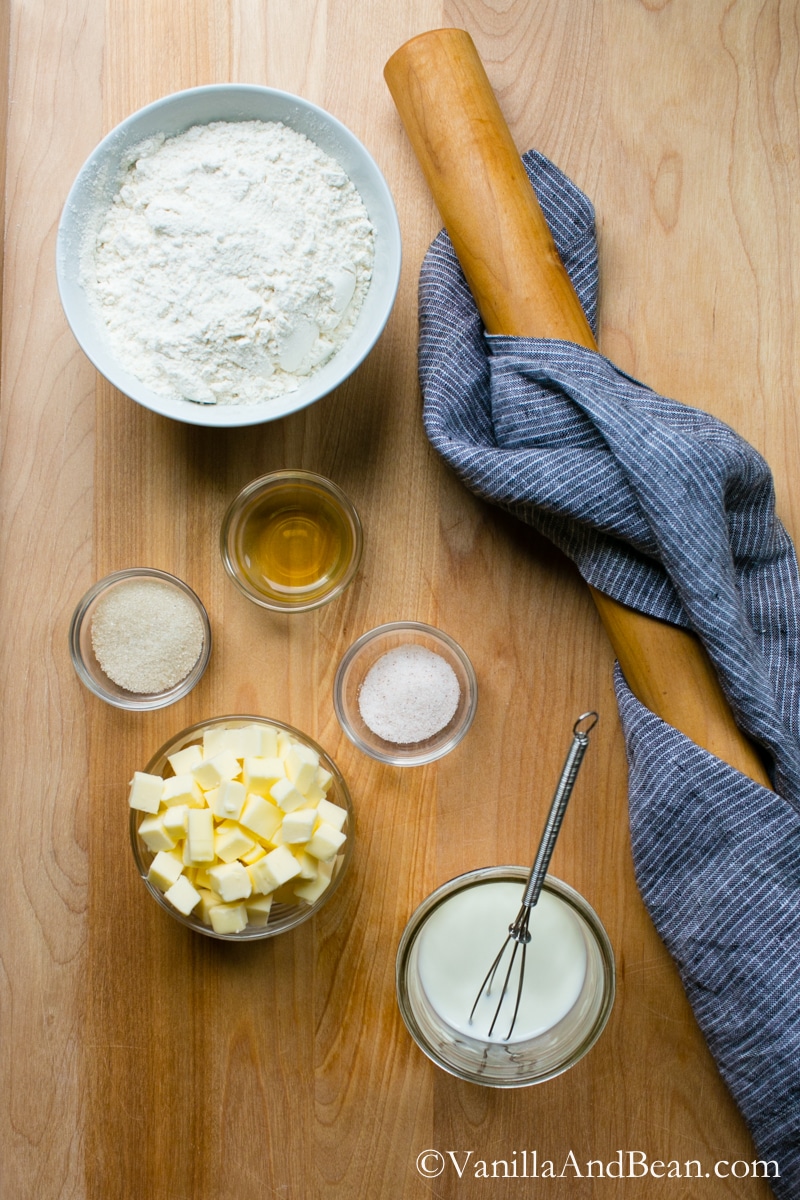
Making flakey pie crust from scratch can be intimidating. But as with anything, practicing improves skill over time. I make pie dough from scratch because it’s relaxing, rewarding and tastes like it is homemade, my preference. I’m not a fan of prepackaged pie crust simply because I only want the freshest, natural ingredients in my food, and ones I can pronounce. An all butter dough is my preference simply because it tastes so good.
Table of Contents
Hand Making Pie Dough vs Food Processor Pie Dough
While I find making pie dough in a food processor quick and easy, the end pastry just doesn’t have the flakiness of a hand made crust. A food processor tends to break the butter down far too much. Instead of surrounding the hazelnut size pieces of butter in flour, it breaks the butter pieces down and incorporates it into the flour. Layers of flakey goodness is achieved by layers or larger flat and chunky pieces of butter that are surrounded by flour. Taking time to hand make pie dough is truly worth the effort.
Why Buttermilk?
I DIY buttermilk to hydrate pie dough in all my crust recipes because the acidity helps tenderize gluten and yields a more pliable dough and tastier crust. Homemade simply because it’s so darn easy to make and I hardly ever have buttermilk on hand. Homemade buttermilk is simply a mixture of milk and either apple cider vinegar, white vinegar or lemon juice.
If you’d like to use real buttermilk, you can! You’ll need just about a teaspoon more liquid in your pie dough.
Make Ahead Ready
Pie dough is freezer friendly. The dough can be made weeks ahead and frozen then thawed in the fridge the night before you need it. It also holds well in the refrigerator for at least two days prior to use.
What Type of Pie Pan to Use
The type of pie pan you use can make a difference in your crust. I use stoneware and glass, both of which seem to bake more evenly than metal. With stoneware, the dough tends to slide down a bit, which makes it look shrunk, due to its slick surface. With glass, the edges tend to keep their shape better and you can keep an eye on the bottom of your crust while baking; an advantage if you’re a bit uneasy about pie baking.
How to Make a Flakey Pie Crust
Below, I share my process, tips and recipe for a delicious flakey blind baked single pie crust (pictured) and double crust dough with a flaky top pie crust.
Helpful Tools: Pastry Cutter, Bench Scraper, Rolling Pin (these are affillate links)
Start with cold ingredients. If baking during Summer, I put my flour mixture in the fridge for at least 30 minutes before starting.
Size of Butter Chunks Matter
When cutting the butter into the flour, use a pastry cutter, fork or your hands. The advantage of using a tool rather than you hands is that the butter will stay colder longer. If you use your hands, work quickly pressing the dough in between finger to flatten the chunks. You want some pieces flat and others chunky.
Pay attention to how the size of the butter chunks change as you cut the butter into the dough. For the bottom crust, a more mealy flour-butter mixture is desired where the butter will be pea size. For the top crust of a double crust pie, when cutting in the butter, the chunks should remain larger, such as almond or hazelnut size. This creates the flakiest pie crust we’re all after. For the images below, I am working on a bottom crust to blind bake. Still a very flakey pie crust!
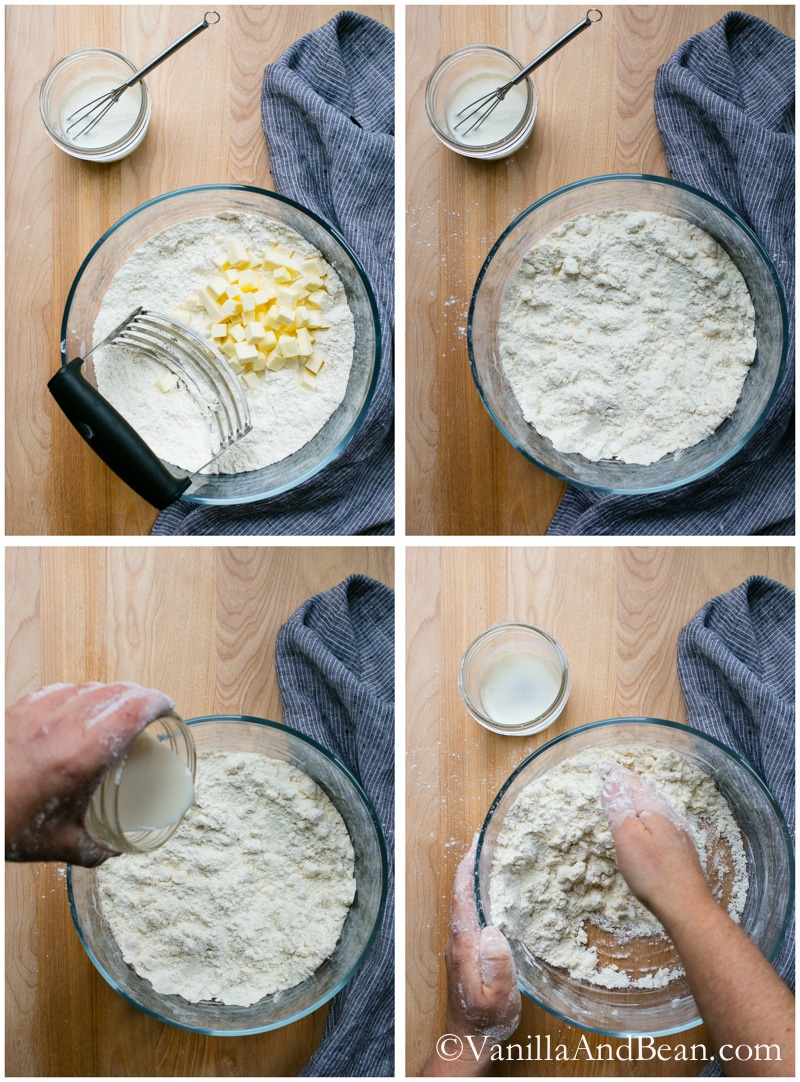
Incorporating the Buttermilk
Once the butter is cut in and still chunky, pour in the buttermilk. Be sure to hold out a few teaspoons as hydration will differ between flours and season. Incorporate the buttermilk by using your hands and lifting the bits from the bottom of the bowl, bringing them up and over the top of the ingredients, then using your palm to press down. Fold again and again adding the remaining buttermilk if needed. But not too much. An over-hydrated dough creates a tough dough.
To test the dough to see if it needs more moisture, grab a fist full of dough and squeeze it. If it holds together, it has enough liquid. If it doesn’t hold together, add more liquid, 1 tsp at a time until it’s ready. One teaspoon doesn’t sound like much, but in the dough world, it is!
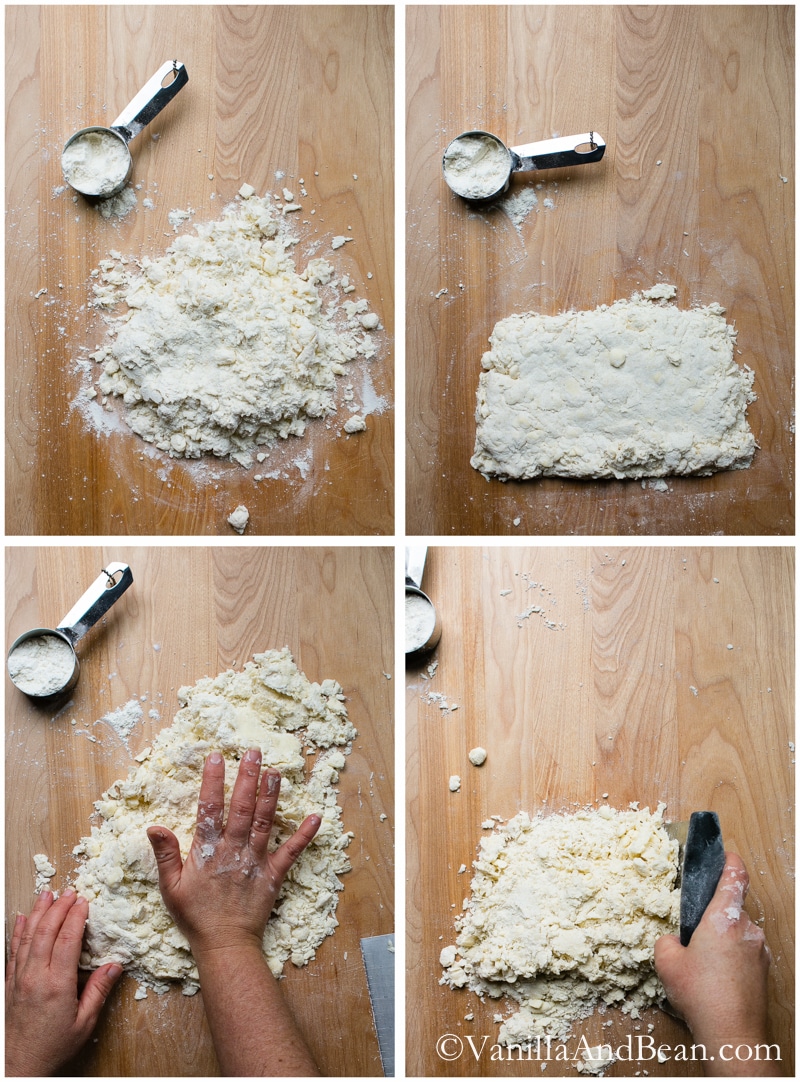
Building Those Flakey Layers
The dough is shaggy at this point. The idea here is that we start to build layers so folding and pressing the dough is key. Using a bench scraper will make the job of gathering bits and pieces much easier.
Gather the dough into a small rectangle. Use the heel of your hand to press the dough away from you. Do this three times from left to right on the rectangle. Then gather the dough again into a rectangle and press and fold the dough 7-8 more times. I use this method for both a bottom and top crust.
Remember if the dough starts getting sticky, pop it in the freezer for 5 minutes.
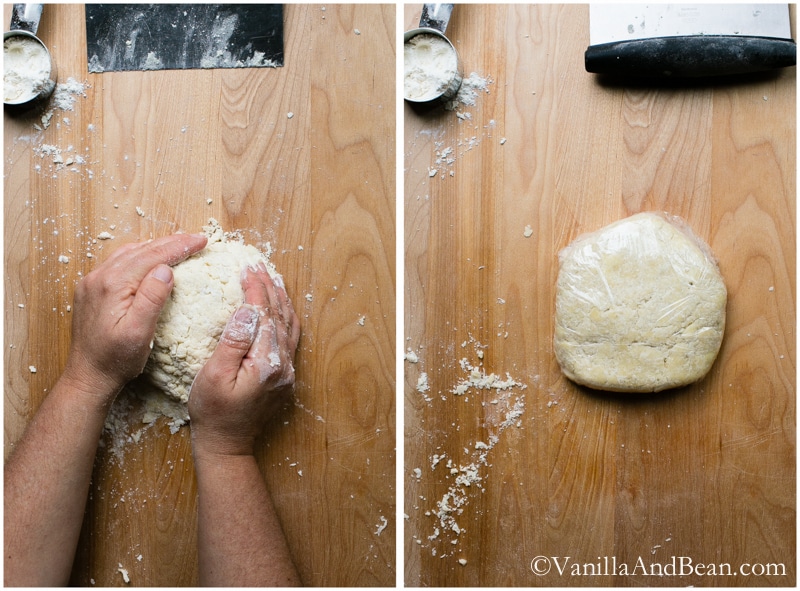
Start shaping the buttermilk dough into a rough ball and then into a disk about 1/2″ thick (1.2cm). It will seem dry, but will hydrate as it rests. Wrap tightly in plastic wrap or parchment paper and rest in refrigerator for at least 2 hours, but preferably overnight. At this point the dough can be frozen for up to a month. To thaw the dough, let it rest in the refrigerator overnight.
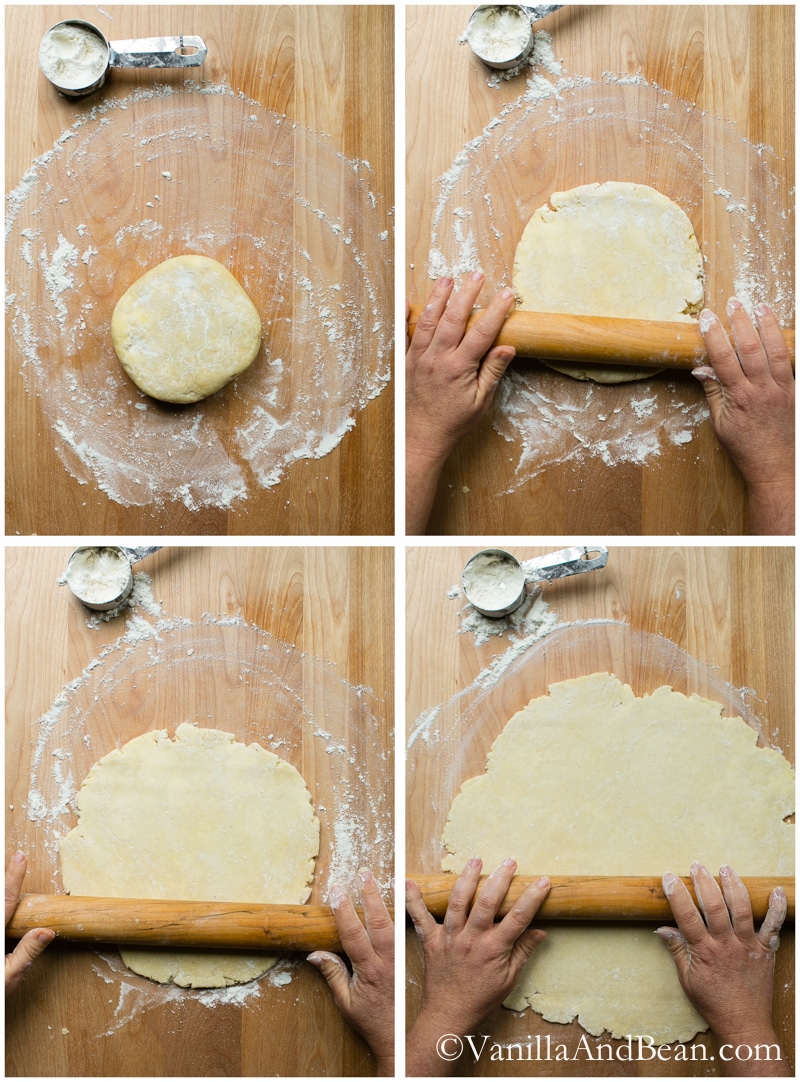
Rolling Out The Dough
Before rolling out the buttermilk pastry, remove it from the refrigerator and let it set for about 20 minutes at room temperature. This will help soften the dough and making rolling a bit easier. Place the dough on a lightly floured work surface. Dust the top, and rolling pin with flour. Beat the dough a few times with the pin to start to soften the dough.
Begin rolling the dough, firmly but gently, from the middle out, taking care not to roll off the top and bottom edges. This helps shape the dough into a circle in the end.
After 7-8 rolls, turn the dough one-quarter of the way around (same direction each time). Roll again, 7-8 times, from the center out. Quarter turn again. Keep repeating this process lightly dusting with flour under, on top of the dough and rolling-pin as needed so that the dough doesn’t start sticking.
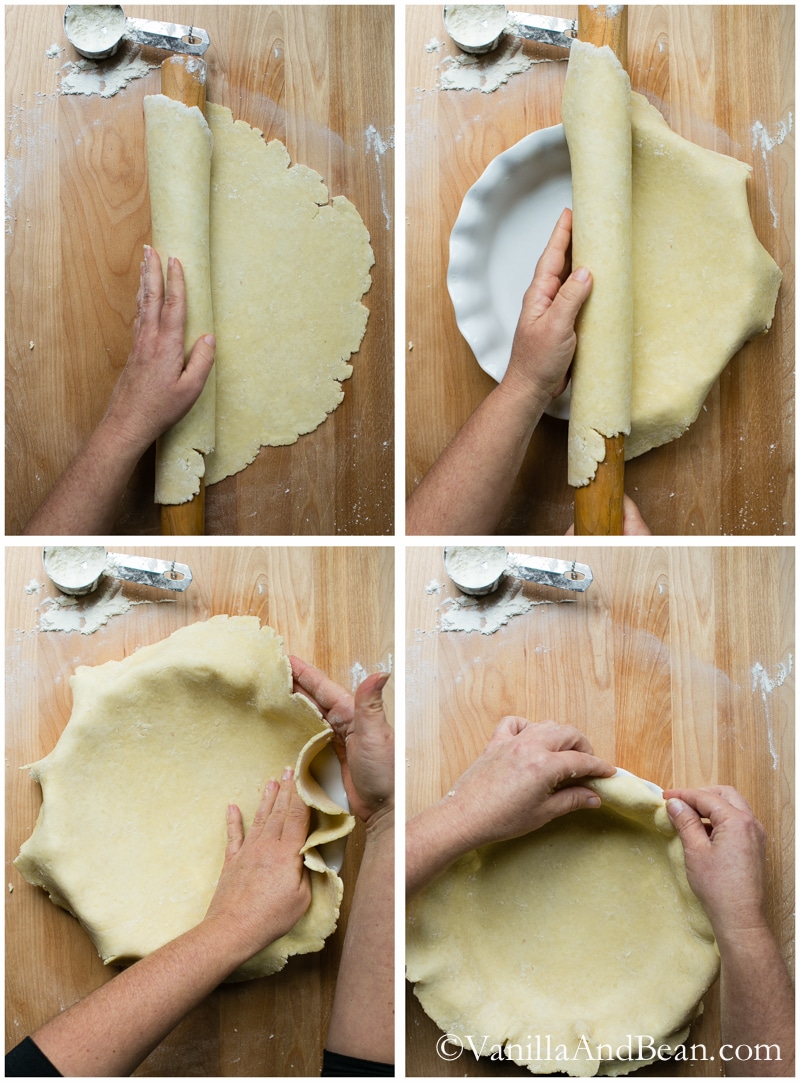
Roll the dough to 1/8″ (3mm) thick and about 1/2″-1″ (.5cm -1 1/4cm) beyond the top edge of your pie plate (turn the plate upside down on the dough to measure). Trim the rough edges with kitchen sheers as needed.
Roll the dough over and onto your rolling-pin to transfer the dough to the pie plate. Gently press the dough into the plate without stretching it. For the bottom pastry, roll the edges under to create the crust’s edge and crimp as desired.
Refrigerate for at least 30 minutes before moving on.
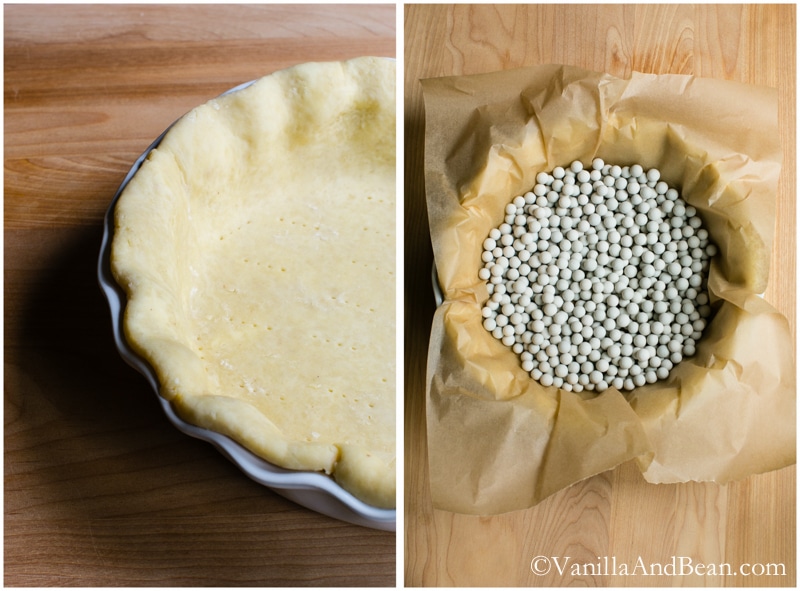
Prepare the Dough for Blind Baking
Dock the dough by using a fork to poke small holes in the bottom crust. This will help release the steam that would otherwise make your dough puff up. We want that surface to be flat and to contain all the goodness you’ll add to it later.
Fill the bottom with parchment and either dried beans or pie weights and bake.
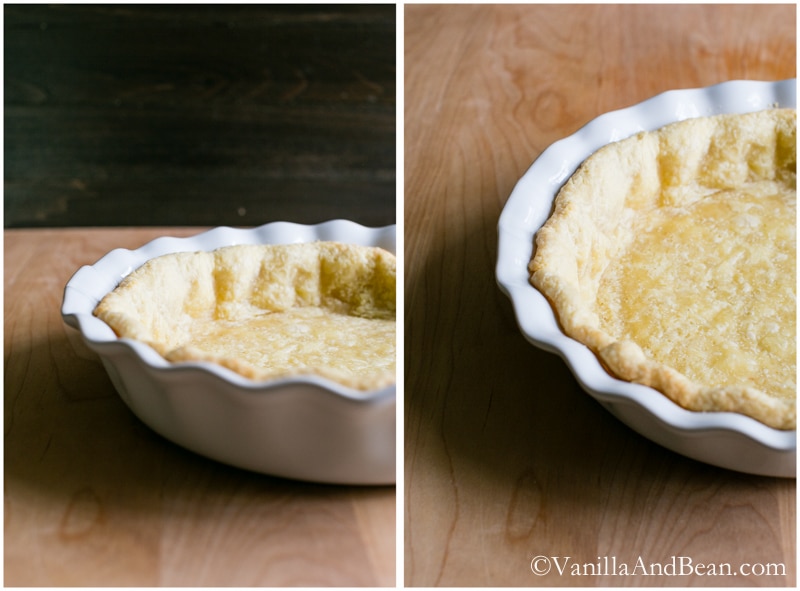
Your finished blind baked buttermilk pie crust will be lightly golden and not fully baked. It will finish baking after it’s filled with whatever recipe you’re using such as pecan pie, hand pies, quiche or lemon meringue.
This sounds like a lot, I know. But flakey pie crust comes together quickly. With practice and patience you’ll master the art of pie pastry.
How To Make an All Butter Buttermilk Pie Dough Recipe
Ingredients
- Pan Spray
For One Disk (11-12 oz / 311g -340g):
- 1/2 C Unsalted Butter refrigerated, 113g
- 3 Tbs Milk
- 1 1/2 tsp Apple Cider Vinegar see note on buttermilk
- 1 1/4 C All Purpose Flour 190g
- 1 Tbs Cane Sugar
- 1/2 tsp Sea Salt
For Two Discs (22-24 oz/311g-340g each)
- 1 C Unsalted Butter refrigerated*, 226g
- 6 Tbs Milk
- 3 tsp Apple Cider Vinegar
- 2 1/2 C All Purpose Flour, 380g
- 2 Tbs Cane Sugar
- 1 tsp Sea Salt
Instructions
To Make The Dough:
- For a mealy, bottom crust, cut the butter into 1/4" (6mm) square pieces. For a flaky top crust, cut the butter into 1/2" (12mm) pieces. Place the butter in the freezer for at least five minutes.
- Whisk the milk and apple cider vinegar together until it bubbles. It will thicken as it sets for five minutes. This is your buttermilk.
- In a large bowl, mix the flour, sugar and salt. Using a pastry cutter, cut in the butter. For a bottom crust, you want a mealy consistency, so cut in the butter until it is about pea sized. For a top crust, the butter should remain in larger chunks, such as almond size.
- Because flour and butter contain varying amounts of water, we don't want to add the milk mixture in all at once. An over-hydrated dough creates a tough pastry. Pour in all but about 1 Tbs of the milk mixture. Use your hand to incorporate the buttermilk, folding and pressing the mixture. Flattening out the butter is okay. To test hydration, grab a hand full of dough and squeeze it. If it holds together, don't add any additional milk. If it's still crumbly or falls apart, add the remaining milk a teaspoon at a time and continue folding and pressing to a shaggy consistency. If the butter is starting to get a bit warm at this point, put the mixture in the freezer for about 5 minutes. We want the dough to stay as cold as possible.
- On a lightly floured work surface, dump out the shaggy dough. Using a bench scraper, fold and press the dough at least 6-8 times, eventually shaping the mixture into a rough rectangle about 1/2" (12mm) thick. Use the heal of your hand to press the dough away from you, smearing the dough between your hand and work surface. Do this in three increments working from one end of the rectangle to the other. Use a bench scraper to gather the dough once again and shape into a rectangle. Fold and press the dough over and on top of its self 7-8 more times. This helps to hydrate the dough and build flaky layers.
- Gather all the bits together and shape into a rough disk approximately 1/2" (12mm) thick. Wrap tightly in plastic wrap and rest in refrigerator for at least 2 hours, but preferably overnight.FOR A GALETTE: The dough is now ready for making a galette or pressing on to make a par baked pie crust.
To Roll Out The Dough:
- Lightly spay the pan with pan spray, bottom and sides.
- Place the dough on a lightly flowered work surface. Let is set for a about 5-10 minutes to warm up the pastry as to make it more pliable to roll out. Dust the top with flour and dust your rolling pin. Begin rolling the dough from the middle out, taking care not to roll off the top and bottom edges. This helps shape the dough into a circle in the end. After 7-8 rolls, turn the dough, clockwise one quarter of the way around. Roll again, 7-8 times, from the center out. Quarter turn again. The turning helps monitor for a sticky bottom. Keep repeating this process dusting with flour under, on top of the dough and rolling pin as needed so that the dough doesn't start sticking.
- Roll the dough to 1/8" (3mm) thick and about 1/2"-1" (.5cm -1 1/4cm) beyond the top edge of your pie plate (turn the plate upside down on the dough to measure). Trim the rough edges with kitchen sheers as needed. Roll the dough over and onto your rolling pin to transfer the dough to the pie plate. Gently press the dough into the plate without stretching it. For the bottom pastry, roll the edges under to create the crust's edge and crimp as desired. Wrap tightly with plastic wrap and place in the refrigerator for at least 30 minutes before blind baking or while rolling out the second disk for the top of the pie.
Making a Single Crust Pie to Blind Bake:
- Preheat oven to 375F (190C). Set the baking rack in the center.
- Remove the pie plate from the refrigerator. Dock the dough by pricking the bottom of the dough with a fork. This will prevent the dough from rising up. Cover the chilled crust with a piece of parchment paper and fill it with 2-3 cups of either pie weights or dried beans.
- Lower the oven temperature to 350F (180F) and place the pie in the oven. Bake for 25 minutes, rotating the pan 1/2 way through baking. Remove the crust from the oven, carefully remove the beans or pie weights and parchment and return the crust to the oven for an additional 5 minutes.
- Cool, then use for a custard pie such as pecan, quiche or lemon meringue among others, following the directions for the pie recipe.
Making a Double Crust Pie:
- Before refrigerating the bottom crust, fill it with your pie filling, cover it and place it in the refrigerator. While the bottom crust is in the refrigerator resting, roll out the top crust in the same fashion as the bottom, rolling to 1/8" (3mm) thick and the diameter to about 1/2" beyond the top of the pie pan.
- Roll the dough over and onto your rolling pin to transfer the dough to cover the contents of the pie. Trim as needed to match the top crust with the bottom crust and crimp with a fork or flute with fingers to seal in the contents. Use a pairing knife to make about five or six steam vents in the center of the crust.
- Chill for at least 30 minutes, but up to one hour is fine. Do not hold in fridge longer than one hour as the filling will start to hydrate the dough and yield a soggy bottom.
- Egg wash then bake according to pie directions.

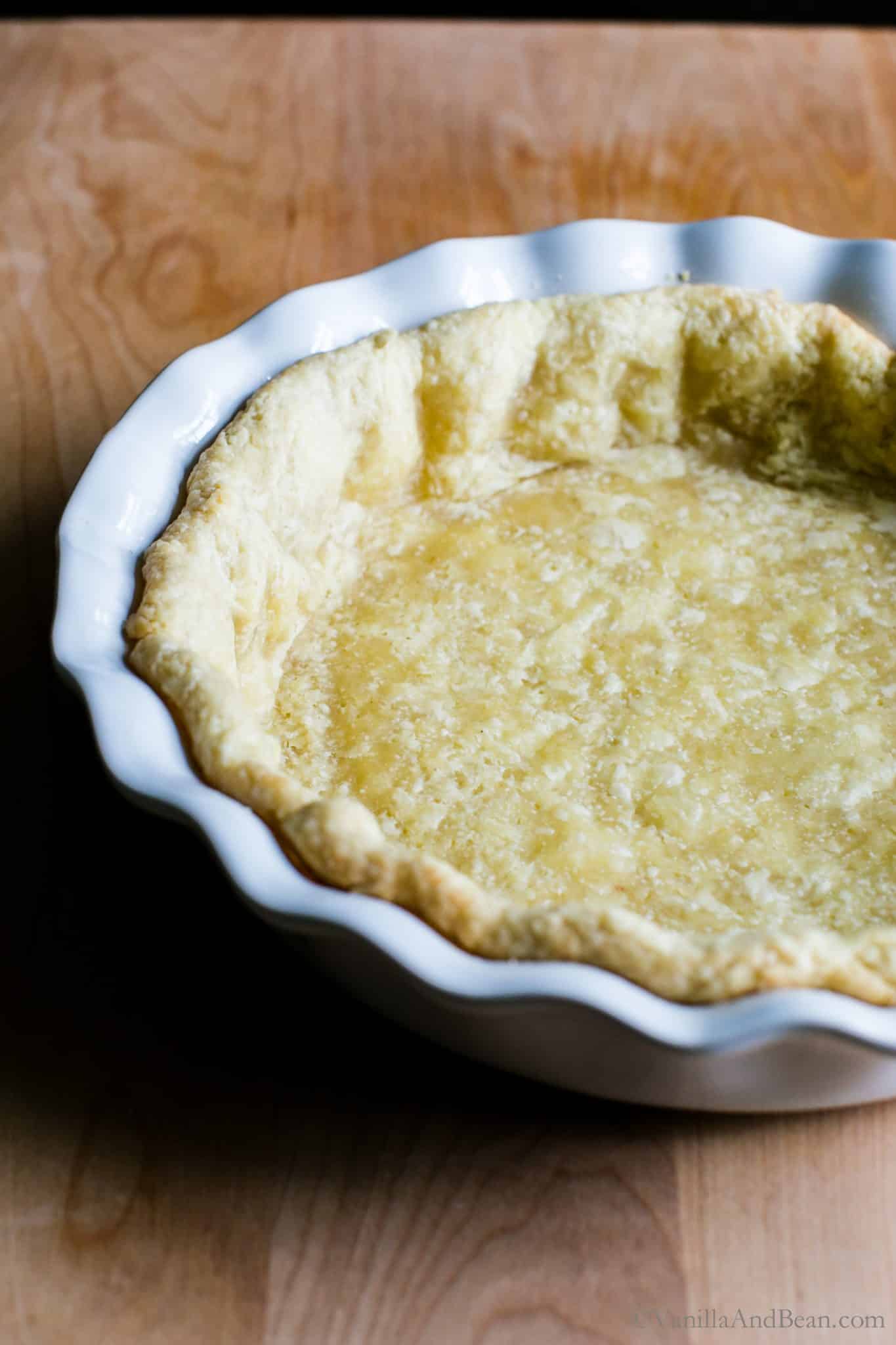
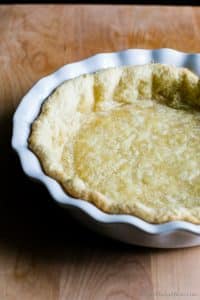
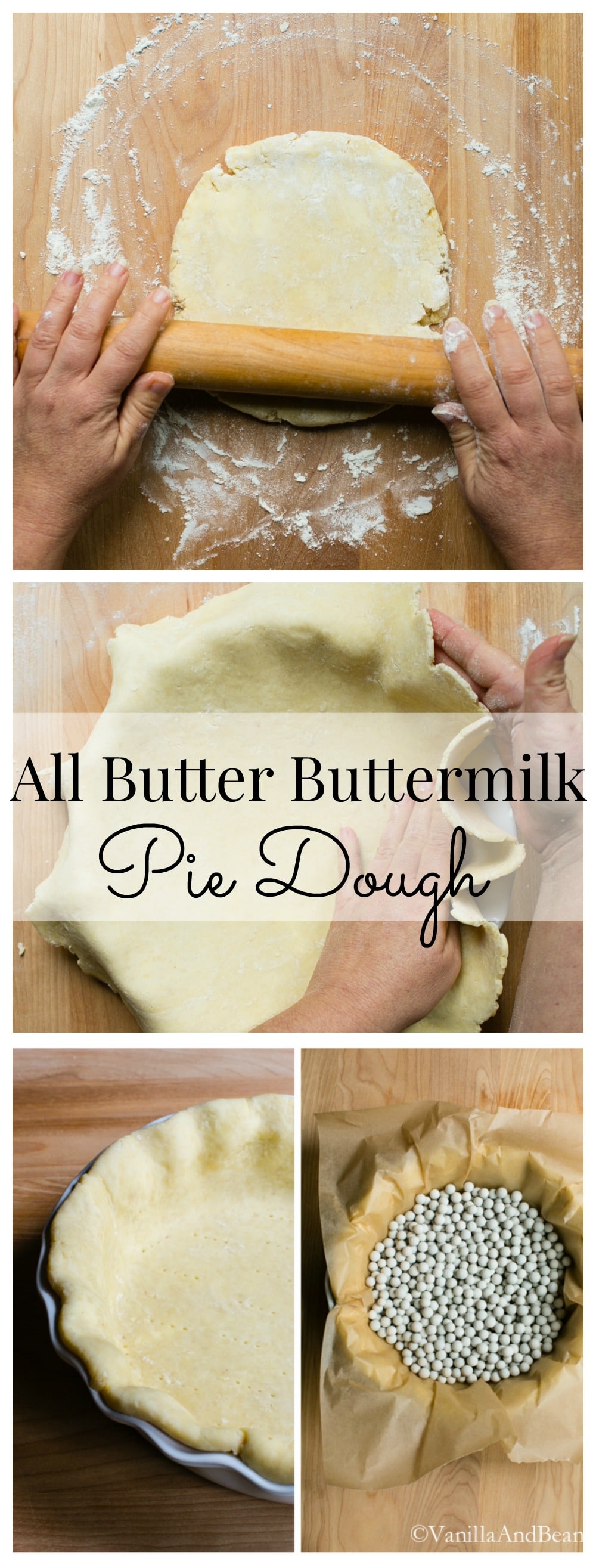
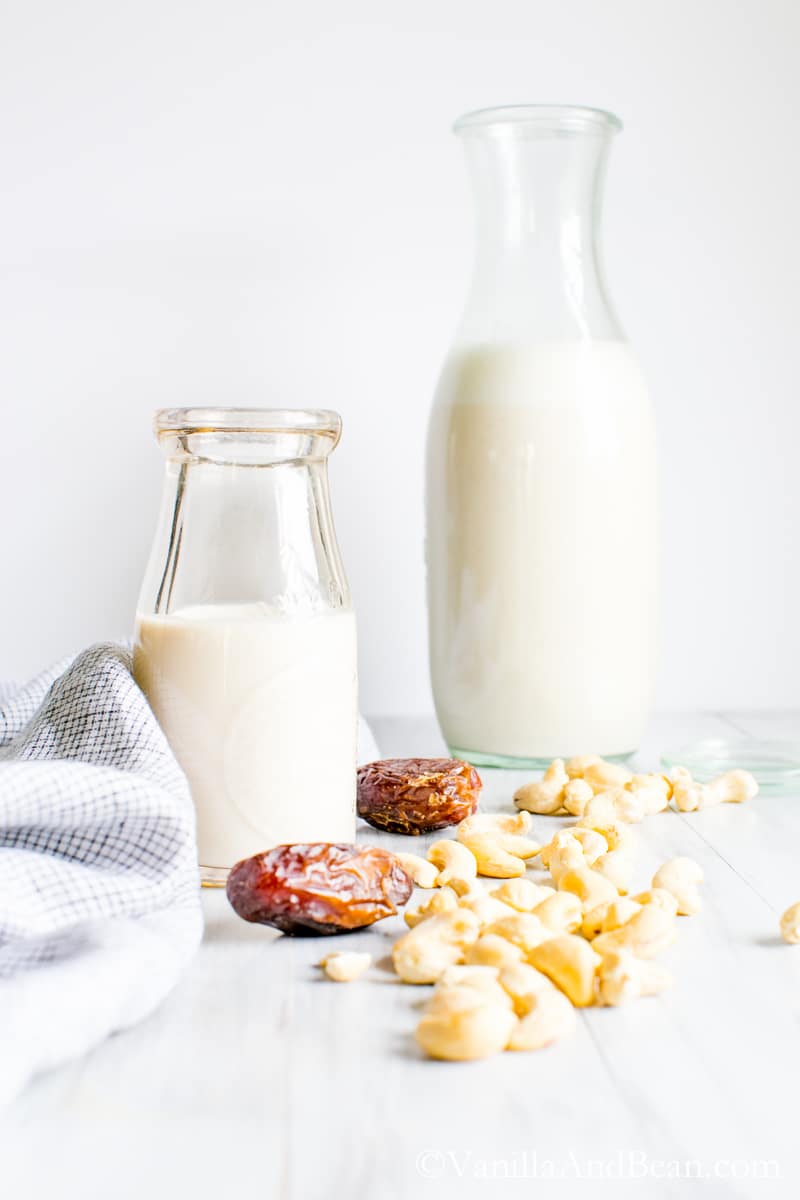
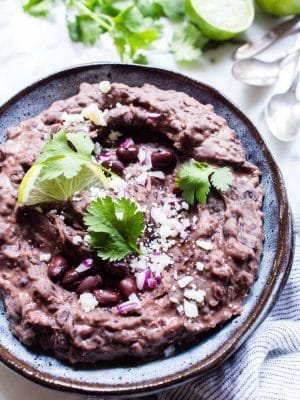
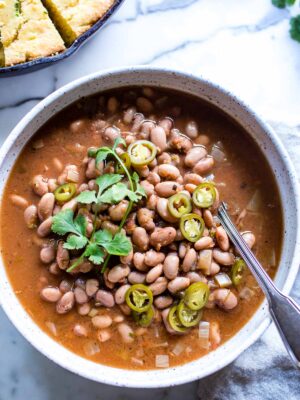

Hi there! Thanks for the recipe and detailed inx! I want to try this for small hand pies — how crumbly should the butter be for that? Should I follow the top or bottom crust inx or maybe a mix of both? And will freezer storage be different here — ie: after shaping into a disc, should I then cut into smaller portions and store that way? I’ve only done it with a food processor so excited to see how hand cutting it will taste! Thank you!!
Hi Karman! Thank you for your note. For small hand pies, I leave the butter in pretty large pieces (almond sizeish) since there’s not a lot of filling, the dough can stand up to the weight of the filling. That what I use for these Blueberry Hand Pies. As for freezing, you can freeze before or after cutting the hand pies, whatever fits your needs/schedule. It’s been my experience that hand cutting/mixing pie dough yields a flakier crust. But honestly, both taste amazing, so if I’m going for speed, I still use a food processor in a pinch! I hope this helps and you enjoy those hand pies!
Thank you so much for the pie crust recipe I think I’m going to try it, I’ve always used the one from Pioneer Woman using apple cider vinegar which I think is that ingredients that makes the pie flaky I also use lard as well, but I’m going to take a chance and try the butter, I’m not the greatest pie crust person but I hope to get that way like you thank you so much again.
Hi Martha! Thank you for your note and kind words. I find pie crust to be kinda like sourdough bread, it’s always a work in progress. I’m a firm believer in adding vinegar (homemade buttermilk) to the dough … it definitely makes the pie more flakey. I hope you enjoy the process and the recipe!
What are the instructions for making your own buttermilk?
Hello Bobbi! It’s #2 in the method: Make the Dough “Whisk the milk and apple cider vinegar together until it bubbles. It will thicken as it sets for five minutes. This is your buttermilk.”
A late note: all butter crusts are always tougher than half butter/half lard or shortening crusts. Buttermilk tenderizes baked goods. Has anyone done a test run and compared one method to the other? I am supplying a number of individual galettes to a wedding reception next month and would like to try the latter combination. Mike
Hi Mike! Thank you for your note. One of our assignments in pastry school was to test buttermilk (or milk+acid) vs ice water when making dough. We found the pastry with buttermilk to be superior in flakiness. I’ve not experienced a tougher crust with all butter pie dough (technique and experience could be a factor here). The flavor of an all butter dough my personal preference, reason for my all butter post. Sometimes, in an effort to reduce the cost of a pasty, lard or shortening will be used. I don’t have any notes from someone who may have used 1/2 shortening.
Hello! I’m excited to make this pie crust for your Bourbon Pecan Pie for Thanksgiving. Can I just use the real deal buttermilk instead of the milk/cider vinegar mixture? Thank you ~
Oh yes! Use it. I just use milk and ACV because I don’t typically have buttermilk on hand. You may need to add a TBS more buttermilk however since real buttermilk has a bit less water content in it than milk + ACV. I hope you enjoy it Cristina! :D
I’ve never tried an all butter pie crust so I’m going to give this a whirl tomorrow!
Hooray!! I hope you enjoyed the recipe Shannon! :D
Reading through this recipe has resurrected many memories of my Grandma Edna and Grandma Jenny, the blackberry pie on the one hand, and the rolled potica (in a bundt pan) on the other! Thank you Traci… I will try this TONIGHT!
I make special note of “docking” the crust–reminds me that I’m building a Thoreau-style 16 foot flat bottom boat this winter–and why? you may ask. (For delivering pies across the Sound, of course.)
Wha, whaaaa, whaaaaT? Dennis. You are not building a Thoreau-style 16′!! Okay… well if you do, please bring it to Whidbey and pick up those pies! Your Grandma Edna and Grandma Jenna… the pie… the potica! Please let me know how you do with the Buttermilk Pie Dough. What ever will you put in it? Blackberries? :D
Dennis, I don’t know you, but I love your spirit! Build the boat and deliver your pie across the sound!.
Happy New Year!
Ruby (Columbus, Georgia)
I’ve never been able to perfect an all butter crust so I tend to do half butter and half lard for my crusts. But maybe buttermilk is the secret – definitely going to have to try this recipe!
Heeey Chelsea! I found the more I work with dough, the better I get at it because I begin to realize how it ‘should’ feel when it’s time to put it in the fridge or when it’s chilled enough to roll out. I’ve never made a lard crust, but I know it’s the way it’s been done forever.. my grandmother made hers with lard! I hope you’ll give it a go, Chelsea!
Your instructions and photos are perfection, Traci! All buttermilk pie crusts FOR THE WIN!
Thaaank you Liz!! FTW – Yesssss!!
Pie dough still intimidates me, but seeing everyone’s beautiful pie creations has me inspired to give it another go!
Your instructions are so great Traci and that dough looks divine! Here’s to many happy pie baking sessions this holiday season :)
Oh I get it, Amy! I still have a hard time sometimes. But the more I practice the better I get at it. So keep going!! It’s so worth it!
I love this tutorial, Traci – so helpful and clear. The shot by shot pictures are a great way of showing all the steps! I’ve never added buttermilk to pie dough – will need to try it.
Oh that’s great, Geraldine.. so happy to hear. Buttermilk was a game changer for me! Love it! :D
What a lovely post Traci. And so detailed. I am always looking for a real good pie crust because I always like you love doing it at home. Your instructions are so good. There is indeed nothing like a homemade crust. Love!
Thank you my dear. Me too, Rakhee. Making pie dough at home really is quite easy with a little practice and so few ingredients. I hope you enjoy it! :D
Excellent pie dough tips, Traci! Your pie dough looks gorgeous! The photo where you’ve rolled it out…I haven’t seen a more perfect pie crust in a long time! And I’m with you on wanting an all natural, homemade pie dough vs the store bought one with tons of ingredients I can’t pronounce. Can’t wait to try out your technique! :)
Thank you Beeta! I’ve practiced pie a lot, but still have so much to learn! I’ve not yet perfected crimping and decorating! There are so many ways! :D